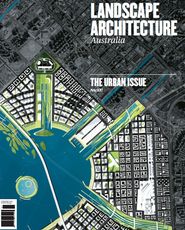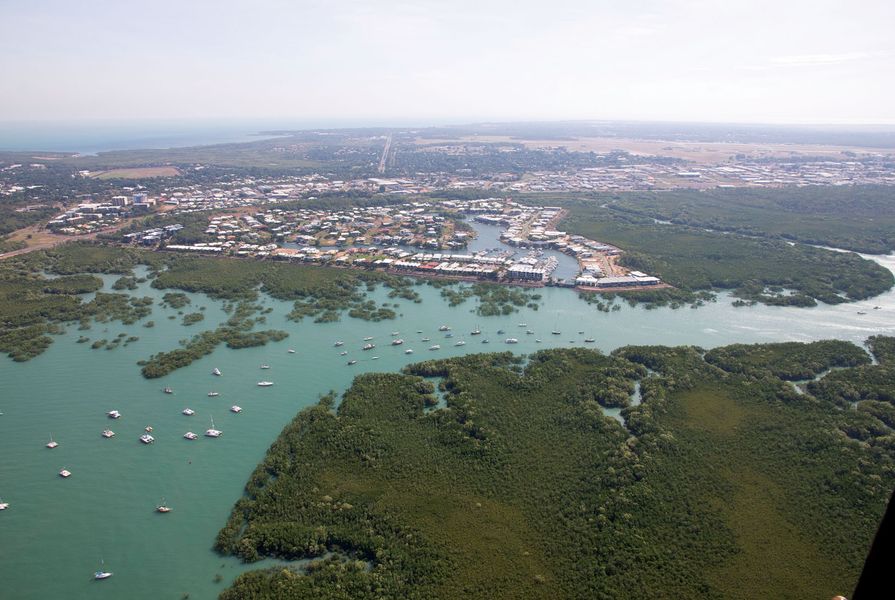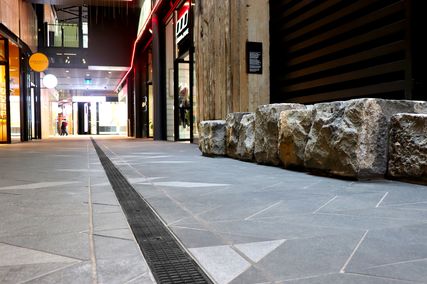We are reminded almost daily that this is the century of urbanization. Literally billions of people are moving into new cities. In Australia, the situation is less dramatic but nonetheless challenging. According to the Australian Bureau of Statistics (ABS), most Australian cities will more or less double in size by mid century. Furthermore, if we maintain a relatively high immigration rate (as we will need to to supply our labour market) then, by century’s end (again according to the ABS), Australia could become a nation of over sixty million people. Housing these extra millions would require the design and construction of another nine Sydneys, ten Melbournes or twenty Brisbanes – in the next eighty-eight years. It is therefore more than appropriate that landscape architects take a keen interest in urban design.
Of course, humans have been engaged in urban design ever since the agricultural revolution seeded the first cities, but as a discipline and a (quasi) profession its pedigree goes back to Harvard University, where an urban design course was first launched in 1960. The interest in urban design at the time was born of a sense of crisis that was both academic and very real. Firstly, the Corbusian tenets of the Congrès International Architecture Moderne (CIAM) that had seemed so right for postwar reconstruction were by then being recognized as inhumane. Secondly, in North America as in Australia, the phenomenon of suburban sprawl was gaining momentum, creating a new anti-architectural frontier and draining established urban centres of their civility.
Fast forward to now and the days of fossil-fuelled sprawl would seem numbered, and the CIAM has been reinvented in the form of its very nemesis, the Congress for the New Urbanism (CNU). Love it or loathe it, new urbanism has dominated urban design debate and practice at the turn of the twentieth century.
Manifesting international concern for sustainability, the early twenty-first century, however, sees the rise of green urbanism, a movement that criticizes new urbanism for its overemphasis on (neo-conservative) aesthetics and its lack of attention to ecological footprint.
Because of its insistence on a “sense of place” as an antidote to modernism and globalization, landscape architecture’s alignment with the commercial pros and the intellectual cons of new urbanism was inevitable. Since the late twentieth century, landscape architects, like new urbanists, have been busily – and it must be said, somewhat piously – making cities “nicer.” Making cities nicer is much better than making them more mechanistic, but out of this had to come the critique that landscape architects were being reduced to decorators and that, despite their overtures to ecology, they were not in fact engaging structurally, influentially or creatively with the big issues and the real processes affecting urban change. This critique is now foundational to a new school of thought, originally generated out of the University of Pennsylvania, known as landscape urbanism.
Landscape urbanism is not just a Protestant breakaway: it is simply landscape architecture reworked for an age where urbanization is ubiquitous. Landscape urbanism is an attitude, a rhetorical move and a set of design and planning methods based in the first instance on data, not intuition. Landscape urbanists argue that the landscape (not the building block) is now the best lens, and the formal device through which to design and plan the contemporary city.
What landscape urbanists mean by “landscape” is not scenic or cosmetic, but the ecological, social and economic field conditions of the contemporary city in all its mind-boggling complexity. Landscape urbanists seek to integrate urban systems with landscape systems, whereas Ian McHarg – the first landscape architect to really “take on” the city, separated the two out. McHarg thought the contemporary city was “God’s junkyard,” and as such landscape could only ever be paradise (lost). Landscape urbanists treat the city and its landscapes as a single metabolic system.
Finally, and here is the power play, landscape urbanism seeks to reposition landscape architects as the lead consultants on complex large-scale urban development projects. How all the other professions who claim the keys to the city feel about this is another matter entirely, but as the various practitioners we have brought together in this issue attest, landscape architects would seem increasingly well positioned to influence complex urban processes.
Through the Council of Australian Governments (COAG), Infrastructure Australia and the Major Cities Unit attention is being once again paid to policy that addresses the urban design quality of Australian cities. And yet, urban design per se doesn’t even exist as a profession. With their tradition of urbanity and their working knowledge of building typologies some architects can zoom out and do urban design, but most get the wobbles as the scale increases. Planners – despite having no studio-based design education – also seem to think they can do urban design, the result of which you can typically find in new suburbia. And then there are landscape architects, most of whom know very little about buildings or traffic but liberally add “urban designer” to their business cards, a moniker their pesky institute now intends to formalize. Somewhere, at the intersection of all these desires and skills, is the ideal urban designer – a planner, an architect, a landscape architect – a landscape urbanist?
What we are attempting to do with the thirty-eight pages of editorial license we have been given in this themed issue of Landscape Architecture Australia is move around the nation (and in one notable case beyond) to get a sense of how landscape architects are currently involved in major urban design projects. This should provide some empirical evidence with which to reflect back on the themes briefly outlined above. Our method for doing this is to select one or two major projects from each capital city (sorry Hobart, sorry Melbourne – we tried!) and then use a simple interview format to glean from the landscape architects involved how they are operating.
By standardizing the conversation in this manner we create a situation that lends itself to comparative analysis. Our co-editor, Professor Catherin Bull, undertakes this in the form of an afterword. In all, we hope that this is a timely indicator of the way in which the profession is evolving in relation to the dominant force of the day: urbanization.
Source

Archive
Published online: 18 Dec 2013
Words:
Richard Weller
Images:
Donna Broun,
Julian Bolleter,
Tatum Hands
Issue
Landscape Architecture Australia, February 2013























